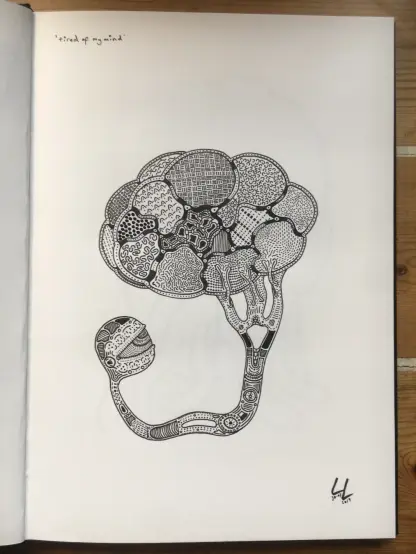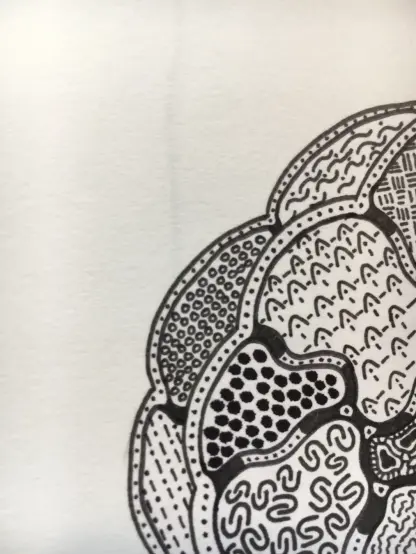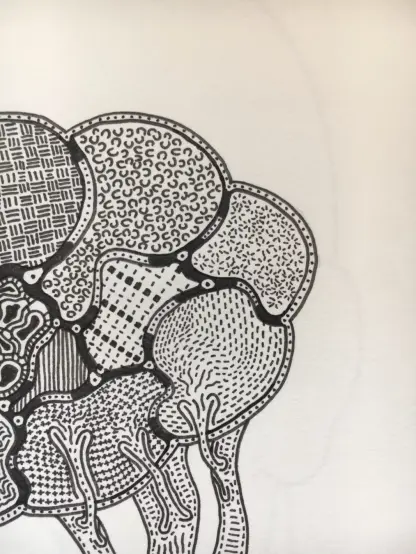How does attention shape #AuditoryProcessing? This study shows that #attention enhances sound encoding only at the cortical level, not in #auditory periphery or #brainstem, so humans’ ability to focus on a single voice in noise relies on cortical mechanisms @PLOSBiology plos.io/4pY5L1f
#Brainstem
Early unilateral auditory deprivation can cause lasting spatial #hearing deficits. @k_anbuhl &co show that unilateral #HearingLoss during development (but not adult-onset) impairs binaural #brainstem function & spatial hearing acuity in guinea pigs @PLOSBiology https://plos.io/46njw1P
Slow amplitude fluctuations in sounds, critical for #SpeechRecognition, seem poorly represented in the #brainstem. This study shows that overlooked intricacies of #SpikeTiming represent these fluctuations, reconciling low-level neural processing with #perception @plosbiology.org 🧪 https://plos.io/3FJ4adI
BRAIN STEM (Canadà) presenta nou àlbum: "Nullified" #BrainStem #DeathMetal #Abril2025 #Canadà #NouÀlbum #Metall #Metal #MúsicaMetal #MetalMusic
Thematic art therapy for today
#comic
#brainstem
#art
#computer
MRI scans reveal the damage long Covid does to your brain | The Independent
https://www.independent.co.uk/news/health/long-covid-brain-scans-symptoms-b2625184.html
#LongCovid
#Brain
#BrainDamage
#MRI
#7TScanners
#7TeslaScanners
#Brainstem
#ImmuneResponse
#ImmuneSystem
#CambridgeUni
#Neuroinflammation
Master regulator of inflammation found — and it's in the brain stem
https://www.livescience.com/health/immune-system/master-regulator-of-inflammation-found-and-its-in-the-brain-stem
#physiology #inflammation #BrainStem #VagusNerve
Finding a Master Immune System Controller
'In a series of groundbreaking, elegant experiments ... a team led by Howard Hughes Medical Institute Investigator Charles Zuker has found that one controller of the immune system actually lies elsewhere—in the brain. The researchers showed that a group of nerve cells in the brainstem acts like a master controller or rheostat, sending and receiving signals from vagal neurons in the body to either boost inflammation or dial it down. '
...
'The first big question for Zuker’s group, therefore, was whether the brain really does respond to signals from the immune system. To find out, his team injected mice with a known immune stimulant, lipopolysaccharide, then searched the mouse brain to see if any specific areas were being activated by the signal. The quest was like “looking for a needle in a haystack,” says Medzhitov. But it worked. The researchers pinpointed an area of the brainstem called the caudal nucleus of the solitary tract. That was “extraordinarily exciting,” recalls Hao Jin, a postdoctoral fellow in Zuker’s lab who led these studies. Previous work by Zuker’s team had shown that this area of the brain received other body-brain signals up the vagus nerve highway. '
https://www.hhmi.org/news/finding-master-immune-system-controller
#immunology #neuroscience
#inflammation #VagusNerve #brainstem
Newly discovered group of #neurons in the #brainstem which receives information directly from the basal ganglia and controls the right-left circuit,” Eventually, this discovery may be able to help people suffering from #Parkinson’s disease.
#Neuroscience # Brain #sflorg
https://www.sflorg.com/2024/02/ns02222401.html
"Together, these findings suggest that #seizure activity in a focal subregion of the #amygdala is sufficient to suppress breathing and air hunger for prolonged periods of time in the #postictal period, likely via #brainstem and insula sites involved in #chemosensation and #interoception."
New insights into how hippocampal #MemoryFormation & recall is controlled by a disinhibition-based mechanism, supported by #hippocampal #somatostatin interneurons & their pontine #brainstem inputs from the #NucleusIncertus #PLOSBiology https://plos.io/3NkleaD
“Welcome to the club! #Brainstem abnormalities now join the list of other issues ( #EBVReactivation, #CPET abnormalities, small fiber #neuropathy, #dysautonomia, low #cortisol, symptoms, etc.) that are linking #MECFS and #LongCovid together ever more tightly.”
#MyalgicEncephalomyelitis #pwME #Fibromyalgia #pwFM #
https://www.healthrising.org/blog/2023/04/20/chronic-fatigue-syndrome-long-covid-brainstem/
Hi Mastodon! Another migrating neurobiologist here - I’m a sensory neuroscience postdoc at Cornell University working on optimizing functional imaging of #brainstem circuits using #multiphoton #microscopy in awake, behaving mice.
Looking forward to the new chapter here!
Auditory Brainstem Implants: The Other Bionic Hearing Device
You might have heard of the cochlear implant. It's an electronic device also referred to as a neuroprosthesis, serving as a bionic replacement for the human ear. These implants have brought an improved sense of hearing to hundreds of thousands around the world.
However, the cochlear implant isn't the only game in town. The auditory brain stem implant is another device that promises to bring a sense of sound to those without it, albeit by a different route.
Sensory Implants
Cochlear implants have shown the best results when provided to patients earlier rather than later. It's likely that ABIs would be subject to a similar effect, though users of all ages often cite measurable benefits from such implant devices. Credit: Matt Ralph. CC-BY-2.0
While the cochlear implant itself is a highly complicated device, the basic concept behind it is simple. The usual mechanics of the ear, which receive vibrations from the air and turn them into nerve signals, is bypassed entirely. Instead, a small electronic device captures sound with a microphone. The sound is then processed, with a priority on maximising perception of audible speech. This processed sound is used to drive an array of electrodes implanted within the cochlea itself. These electrodes stimulate the auditory nerves in the cochlea, enabling the wearer to perceive sound.
The auditory brain stem implant (ABI) is in many ways similar to the cochlear implant. The basic theory is indeed the same: audio is captured electronically, and then used to stimulate nerves to provide an auditory sense to the brain. Where the ABI differs is that it skips past the cochlea inside the ear entirely. Instead, the ABI stimulates electrodes placed in the cochlear nucleus of the brainstem itself.
The ABI thus has the benefit that it can provide an auditory sense to patients who, for whatever reason, cannot have a cochlear implant fitted to the auditory nerves in the inner ear. Patients with a condition called Neurofibromatosis Type 2 (NF2) were initially the primary group for ABI use. NF2 is a condition that affects the nervous system, and its associated treatment often causes damage to the auditory nerve. Thus, for patients with this condition, an ABI is suitable where a traditional cochlear implant would be impractical. In cases where the auditory nerves in the cochlea may be damaged or destroyed, an ABI may be applicable.
The auditory brainstem implant (ABI) directs pulses to electrodes mounted in the brainstem, instead of the inner ear. Credit: Hear Hear!, CC-BY-SA-4.0
However, the ABI comes with the drawback that it requires a far more complex implantation than a cochlear implant. Surgery involves opening the skull to access the brain stem, which is far more invasive than the simpler procedure required to implant a cochlear device in the inner ear.
Outcomes for patients are by and large not as successful as patients with cochlear implants when it comes to understanding speech either. With a combination of ABI use with lipreading techniques, many patients go on to learn to understand speech, but few can understand speech relying on an ABI alone.
This is largely down to electrode placement. The cochlea itself has a fairly straightforward map of areas that correspond to high and low tones, which can be stimulated in turn by an implant directly. However, when inserting electrodes into the brainstem, it's harder to map out and stimulate these regions as accurately, and thus an ABI will struggle to deliver as much tonal information to the brain as a cochlear implant would.
The ABI typically uses a paddle-shaped electrode, in contrast to the linear-type electrode used with a traditional cochlear implant. Credit: Hear Hear!, CC-BY-SA-4.0
The lower performance, more invasive implantation method, and obscure application of the ABI have meant that cochlear implants are far more commonly used in practice. Over 700,000 cochlear implants have been fitted worldwide. However, only a few thousand ABI devices have been implanted at most.
While the results from an ABI may not be up to the standards of a cochlear implant, these bionic devices still have value. For patients that can't use a cochlear implant at all, an ABI still provides a basic auditory sense that can be useful, particularly when it comes to environmental sounds. Overall, it's an interesting application of the same technology as the cochlear implant, but dialed in to a unique specific use case.
#interest #medicalhacks #originalart #auditorybrainstemimplant #brain #brainstem #cochlearimplant #implant #medical







